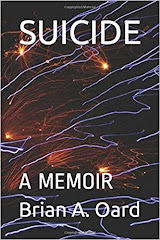I've just finished Goethe's Faust, finding it an almost incomparably wild and wildly uneven ride. This is surely a work that can only be read in the original German, but since I don't read German (my second language is French) I used the modernized 1967 Washington Square Press edition of Bayard Taylor's 19th-century English version. But even through the distorting lens of translation and the backwards telescope of time, the work's major merits and demerits are clear. Faust is, as one would expect, a beautiful and learned book that displays in various passages the full range of Goethe's Enlightenment-Romantic genius. We are given tastes of philosophy, geology, philology, economics, political science, theology, pedagogy, etc., but these are rarely more than tastes. Goethe's mind, as restless as Faust's desire, alights on a topic for a few lines, expounds upon, mocks and/or satirizes it, and then flies off to the next order of business. It seems by book's end that Goethe is the man who really can't bring himself to say, "Stay, thou art so fair." Faust is a self-portrait of its author's eternally restless mind. (Such intellectual restlessness is, of course, one of the defining characteristics of what we call 'genius.' More interestingly, it's one of the roots of the essential unhappiness of genius.)
Faust is also an extremely disjunctive work--and I'm not only referring to the obvious disjunction between Part One, published in 1808 when Goethe was 60 (he had been working at earlier versions for years), and Part Two, a work of the poet's old age published in the year of his death, 1832. The easily noticeable (and thus probably overstated) differences between the two parts repeatedly suggested a question as I read: At what point between the completion of Part One and the beginning of work on Part Two did Goethe go completely and permanently insane? The question is not entirely facetious. The poet may not have gone mad, but his poem certainly did. While the first part reads like an atypically intellectual grand opera libretto (which is exactly what the Romantics made of it) with a strong narrative arc and three central characters (Faust, Mephistopheles, Margaret), the second part explodes this form, forsaking a strong central narrative for a form more befitting Faust's pathological restlessness. The narrative becomes much more episodic, leaping from story to story, character to character, often introducing and disposing of potentially major characters in the space of a few pages (Euphorion and Baucis & Philemon are good examples), a strategy that seems calculated to create discrete, self-contained scenes and eliminate any hint of narrative arc. And most radically of all, Part Two contains several meta-theatrical moments that a modern reader inevitably calls 'proto-Brechtian' even though these elements are more properly seen as yet another link in a chain of metatheatrical 'fourth wall-breaking' that passes through Shakespeare and goes back at least as far as Aristophanes' Clouds. It is uniquely disquieting, though, when one realizes that Mephistopheles, not Faust, is Goethe's 'artist' figure, the play's internal playwright/director/actor--disquieting not least because whereas Faust is an ultimately failed artist/creator, Mephistopheles is a brilliant success. At the end the audience/reader 'applauds' all that Meph. has shown us. (Mephistopheles' stature is also elevated by the fact that like all literary devils, from Milton to Pacino, he gets the best lines, i.e. "...grey are all theories / And green alone Life's golden tree.")
The bifurcation of Faust might be too-neatly summed up by saying that Part One is a work of Goethe's maturity while Part Two emerges from his wild old age. Like the late poems of Yeats, the late novels of James, and the late paintings of Titian and Rembrandt (and unlike Wordsworth's forgettable late lyrics--with the 1850 Prelude as a large if problematic exception, WW was a poet who died artistically long before he ceased to breathe), Faust, Part Two is a touchstone of 'late' style in art. It's loose, risky, more than a little self-indulgent; it steps up to the edge of absurdity and probably slips over a few times (the chorus of insects; Euphorion). But it also contains (and here the comparison with late Rembrandt, the painter of The Prodigal Son and The Jewish Bride, is most appropriate) the entire work's most beautiful and affecting section, the Baucis and Philemon episode. Act V--until the rather arbitrary ex machina salvation in the epilogue--justifies better than anything else Goethe's classification of Faust as a tragedy. Faust's drive to build an edenic paradise in land reclaimed from the sea and his mutually fatal conflict with Baucis and Philemon is Goethe's final and perhaps greatest artistic triumph, an entirely successful synthesis of Romantic heroism and Classical tragedy that truly reads like the spirit of Greece resuscitated in a 19th-century text. It's a piece of sublime artistic magic. My only complaint (in addition to the one about the bogus ending--which I half-jokingly contend is Mephistopheles's final trick on the audience) is that Act V isn't longer. It should be at least as long as the tedious "Classical Walpurgis Night."
Saturday, June 6, 2009
Subscribe to:
Post Comments (Atom)










No comments:
Post a Comment